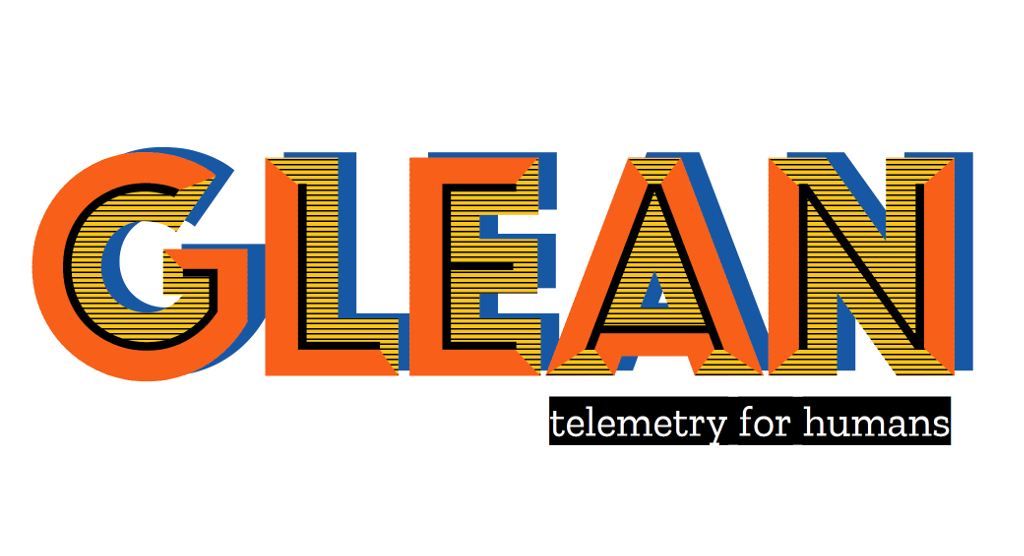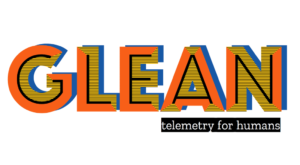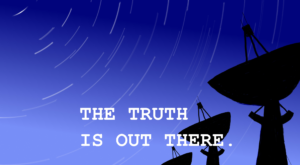(“This Week in Glean” is a series of blog posts that the Glean Team at Mozilla is using to try to communicate better about our work. They could be release notes, documentation, hopes, dreams, or whatever: so long as it is inspired by Glean. You can find an index of all TWiG posts online.)
We have been working on Glean for a few years now, starting with an SDK with Android support and increasing our SDK platform coverage by implementing our core in Rust and providing language bindings for other platforms, well beyond the mobile space.
Before our next major leaps (FOG, Glean.js), we wanted to understand what our internal consumers thought of Glean: what challenges are they facing? Are we serving them well?
Disclaimer: I’m not a user researcher, and I did my best to study (and practice!) how to make sure our team’s and our customers’ time investment would not be wasted, but I might have still gotten things wrong! “Interviewing Users: How to Uncover Compelling Insights” by Steve Portigal really helped me to put things into perspective and get a better understanding of the process!
Here’s what I learned from trying to understand how users work with Glean:
1. Rely on user researchers!
Humans can ask questions, that’s a fact.. right?
Yes, but that’s not sufficient to understand users and how they interact with the product. Getting a sense of what works for them and what doesn’t is much more difficult than asking “What would you like our product to do?”.
If your team has access to UX researchers, join efforts and get together to better understand your users 🙂
2. Define who to interview
Since I am in the Glean SDK team, we did not interview any of my team peers.
Glean has a very diverse user base: product managers, developers, data scientists, data engineers. All of them are using the Glean SDK, Pipeline and Tools in slightly different ways!
We decided to select representatives throughout Mozilla for each group. Moreover, we did not necessarily want feedback exclusively from people who already used Glean. Mozilla has a legacy telemetry system in Firefox most of the company was exposed to, so we made sure to include both existing Glean users and prospective Glean users.
We narrowed down the list to about 60 candidates, which was then refined to 50 candidates.
3. Logistics is important!
Before starting collecting feedback using the interview process, we tried to make sure that everything was in place to provide a smooth experience both for us and the interviewed folks, since all the interviews were performed online:
- we set up a shared calendar to let interviewers grab interview slots;
- we set up a template for a note-taking document, attempting to set a consistent style for all the notes;
- we documented the high level structure of the interview: introduction (5 minutes) + conversation (30 minutes) + conclusions (5 minutes);
- we set up email templates for inviting people to the interview; it included information about the interview, a link to an anonymous preliminary questionnaire (see the next point), a link to join the video meeting and a private link to the meeting notes.
4. Provide a way to anonymously send feedback
We knew that interviewing ~50 folks would have taken time, so we tried to get early feedback by sending an email to the engineering part of the company asking for feedback. By making the questionnaire anonymous, we additionally tried to make folks feel more comfortable in providing honest feedback (and critics!). We allowed participants to flag other participants and left it open during the whole interview process. Some of the highlights were duplicated between the interviews and the questionnaire, but the latter got us a few insights that we were not able to capture in live interviews.
5. Team up!
Team support was vital during the whole process, as each interview required at least two people in addition to the interviewed one: the interviewer (the person actually focusing on the conversation) and the note taker. This allowed the interviewer to exclusively pay attention to the conversation, keeping track of the context and digging into aspects of the conversation that they deemed interesting. At the end of each interview, in the last 5 minutes, the note taker would ask any remaining questions or details.
6. Prepare relevant base questions
To consistently interview folks, we prepared a set of base questions to use in all the interviews. A few questions from this list would be different depending on the major groups of interviewees we identified: data scientists (both who used and not used Glean), product managers, developers (both who used and not used Glean).
We ended up with a list of 10 questions, privileging open-ended questions and avoiding leading or closed questions (well, except for the “Have you ever used Glean” part 🙂 ).
7. Always have post-interview sync ups
Due to the split between the note-taker and the interviewer, it was vital for us to have 15 minutes, right after the interview, to fill in missing information in the notes and share the context between the interviewing members.
We learned after the initial couple of interviews that the more we waited for the sync up meeting, the more the notes appeared foggy in our brain.
8. Review and work on notes as you go
While we had post-interview sync-ups, all the findings from each interview were noted down together with the notes document for that interview. After about 20 interviews, we realized that all the insights needed to be in a single report: that took us about a week to do, at the end of the interviewing cycle, and it would have been much faster to note them down in a structured format after each interview.
Well, we learn by making mistakes, right?
9. Publish the results
The interviews were a goldmine of discoveries: our assumptions were challenged in many areas, giving us a lot of food for thought. Our findings did not exclusively touch our team! For this reason we decided to create a presentation and disseminate the information about our process and its results in a biweekly meeting in our Data Org.
The raw insights have so far been shared with the relevant teams, who are triaging them.
10. Make the insights REALLY actionable
Our team is still working on this 🙂 We have received many insights from this process and are figuring out how to guarantee that all of them are considered and don’t fall back in our team’s backlog. We are considering reserving bandwidth to specifically address the most important ones on a monthly basis.
Many of the findings already informed our current choices and designs, some of them are changing our priorities and sparking new conversations in our whole organization.
We believe that getting user feedback early in the process is vital: part of this concern is eased by our proposal culture (before we dive into development, we asynchronously discuss with all the stakeholders on shared documents with the intent of ironing out the design, together!) but there’s indeed huge value in performing more frequent interviews (maybe on a smaller number of folks) with all the different user groups.












